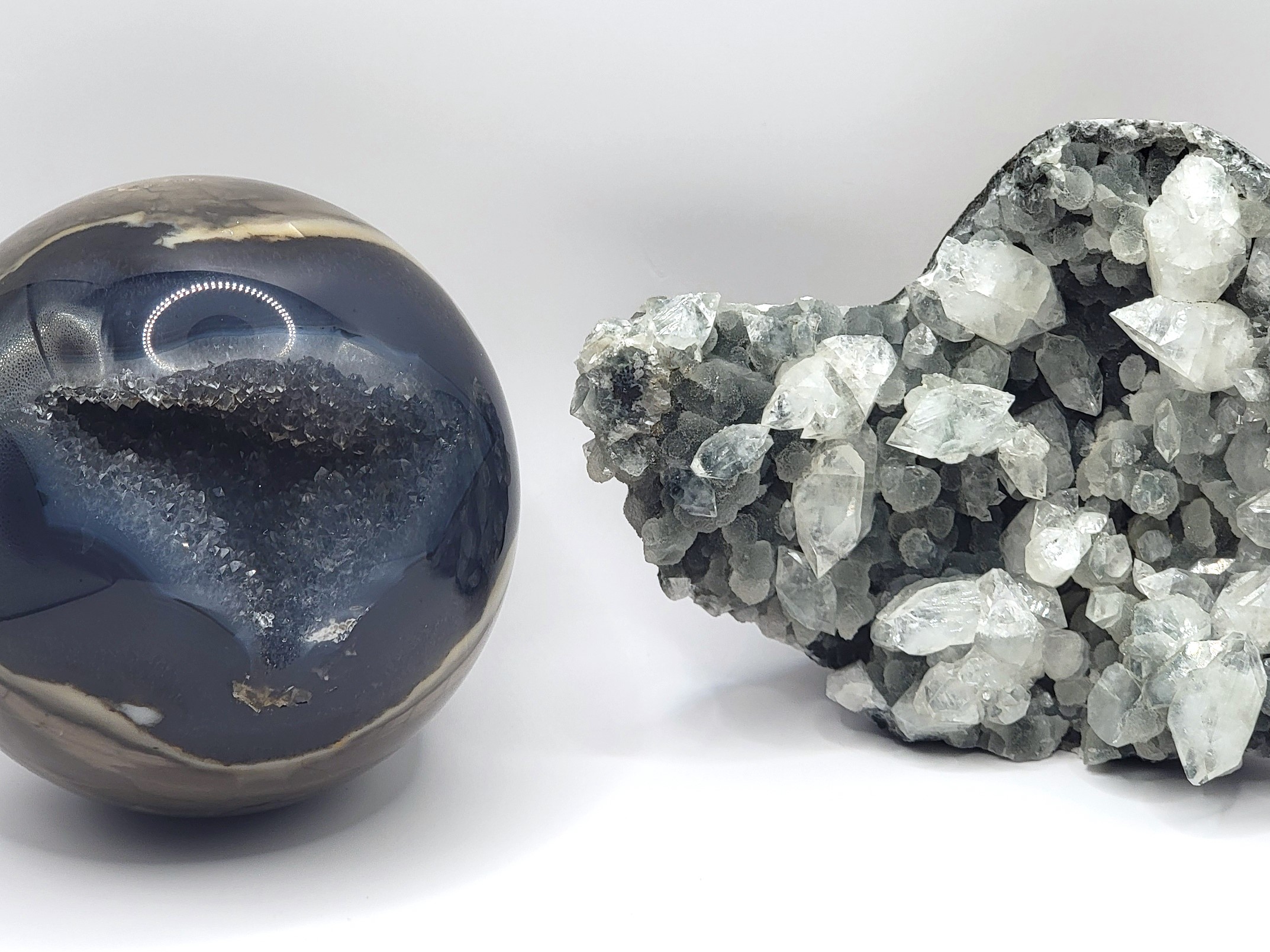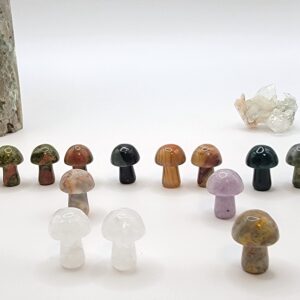Volcano Agate Sphere
$90.00
Our volcano agate sphere has lovely drusy crystals and it is also UV reactive. It is a gorgeous piece for any collector. It would also be perfect in a UV display. Take a look!
Only 1 left in stock
Description
This spectacular volcano agate sphere pulls double duty with its beauty! During the day, it shares the beauty of dark drusy crystals and gorgeous coffee swirl of colors. Yet, under the glow of a UV light, those drusy crystal regions light up a vibrant green color. It is the perfect piece for a collector and also works with many styles of décor. Grab it before it’s gone!
This beautiful volcano agate sphere weighs a whopping 1.591kg (over 3.50lbs.) and measures approximately 4″ in diameter!
Learn About Volcano Agate
Volcano agate is a type of agate that is formed in volcanic environments, often displaying vibrant colors and intricate banding patterns. The presence of trace elements and impurities in the silica-rich solutions that create agate can lead to fluorescence under ultraviolet (UV) light. In the case of volcano agate, the fluorescence may be attributed to the presence of certain minerals or organic compounds that absorb UV light and re-emit it as visible light. This phenomenon is known as fluorescence, and it can cause certain parts of volcano agate to exhibit bright colors or glow when exposed to UV light, adding to the stone’s visual appeal.
Volcano agate is not considered a true agate because it does not exhibit the typical banding patterns and layered structure that are characteristic of agate. Instead, volcano agate is formed in volcanic environments and often displays vibrant colors and unique patterns due to the presence of various minerals and impurities. While it may share some visual similarities with agate, volcano agate is geologically distinct and is classified separately from true agate based on its formation process and mineral composition.
Volcano agate is a form of quartz. Agate, including volcano agate, is primarily composed of silicon dioxide, which is the chemical composition of quartz. Furthermore, chalcedony is the main component of volcano agate and is responsible for the UV reaction seen in some specimens. Chalcedony is a form of microcrystalline quartz that can exhibit fluorescence under UV light due to the presence of certain trace elements or impurities. The unique colors and patterns seen in volcano agate are a result of impurities and trace elements present during its formation in volcanic environments.
The fluorescence of volcano agate is often caused by the presence of certain trace elements or impurities within the stone. Some of the elements that can contribute to the fluorescence of volcano agate under ultraviolet (UV) light include manganese, chromium, and rare earth elements such as europium or terbium. These elements can absorb UV light and re-emit it as visible light, resulting in the vibrant colors and glowing effect seen in some parts of volcano agate when exposed to UV light. The specific combination and concentration of these elements in volcano agate can vary, leading to a range of fluorescence effects in different specimens. While volcano agate may have a different appearance and formation process compared to traditional banded agate, it still shares the fundamental mineral composition of quartz, making it a type of agate variety.
This volcano agate sphere is a WYSIWYG.
For those who are unfamiliar with WYSIWYG, it means: What You See Is What You Get. Pieces identified as WYSIWYGs are not a random pull of stones that are similar to the one(s) pictured. Instead, you receive the actual piece that is pictured.
If you love this piece, you might enjoy the apophyllite specimen as seen in one of the pictures.
Please Note:
- Sizes and weights are approximate. Dimension sizes can vary based on the way the rock is formed. We hand measure our pieces on the longest side. Please see the pictures in the listing.
- The colors may vary due to monitor and lighting differences.
- Please use your own judgment when allowing children to handle.
- Not suggested for use in animal habitats or fish tanks.
- UV Notes: For gemstones, 365nm is the best for UV lighting. Only some specimens illuminate under the other part of this spectrum (370-400nm). This is why some pictures are not as clear for our UV reactive pieces. Our current lights are at 395nm. For home use, the 395nm is less expensive, but in some cases, will need a zoomed beam on the flashlight style UV lights. If you do use a 365nm light, please take care to use eye protection.
Additional information
| Weight | 3.507555 lbs |
|---|
Only logged in customers who have purchased this product may leave a review.












Reviews
There are no reviews yet.